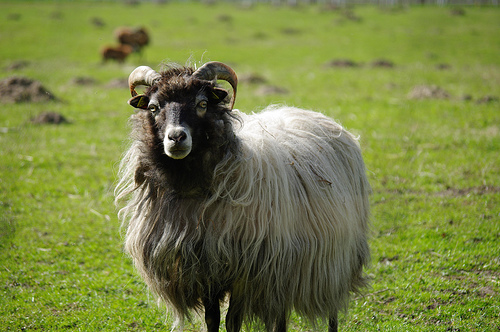
Norway's "slow TV" movement has proven quite popular, and their most recent event was watched by a huge segment of the population. Even more people watched online, where it was available streaming from the official website. I heard that the translation of the first part was quite good, although once the competition began, the translator was less helpful.
Part of the problem with this event was that it had two competing goals: "slow TV," meaning watching things unfold in hypnotic real time, versus the idea of a timed competition. That being said, the Norwegians were attempting to break a world record for "sheep-to-sweater," and they failed in a big way.
The first problem was that all the participants were familiar with their tools and were highly skilled, but they had not done a sheep-to-sweater before. I think they could have fixed a number of problems ahead of time if they had done a trial run. This would have made it obvious where they needed to find more efficient solutions and methods.
For example, all the spinners used their own wheels (which is good, because they were familiar with them). But most of the wheels were equipped with the standard hooks on the flyer, which meant that the spinners had to stop every few minutes to move the single up to the next hook. A small thing, but this was a situation where seconds count. Everyone should have had Woollee Winders!
Another problem was due to the timing. Most sheep-to-sweater competitions happen in the spring. In the fall, the sheep's coat is heavier and fattier with lanolin, which makes it much more difficult to spin and knit. I assume that the bad timing here happened because the television network wanted to capitalize on knitting being a fall event, rather than in the spring.
In the end, the Norwegian team took 8:33 to finish their sweater. The world's record is held by an Australian team at 4:51. Better luck next time!
Image courtesy Flickr/mhaller1979

0 comments